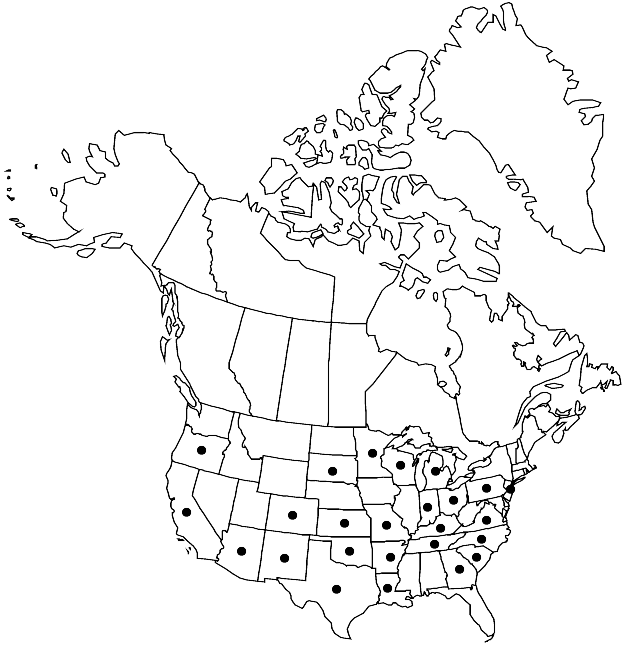Fabronia ciliaris
Bryol. Univ. 2: 171. 1827.
Leaves 0.4–0.9 mm; margins dentate or sometimes entire, not ciliate, teeth of 1 cell; apex acute or acuminate; medial laminal cells 30–45 × 11–12 µm.
Phenology: Capsules mature summer.
Habitat: Bark of trees, rock
Elevation: low to high elevations
Distribution

Ariz., Ark., Calif., Colo., Ga., Ind., Kans., Ky., La., Mich., Minn., Mo., N.J., N.Mex., N.C., Ohio, Okla., Oreg., Pa., S.C., S.Dak., Tenn., Tex., Va., Wis., Mexico, West Indies, Central America (Guatemala), South America, Europe, e Asia (Japan), Pacific Islands (Hawaii, New Zealand), Australia.
Discussion
This treatment of Fabronia ciliaris generally follows that of W. R. Buck (1994b). Although the varieties recognized by Buck are not recognized here, his varietal keys and associated discussions are very useful. That work underlines the high degree of morphological variability within this species. Although many species and varieties have been described within the concept of F. ciliaris, examination of the variation among and within populations, especially with respect to the degree of leaf margin dentition, does not support the acceptance of most of these taxa.
Selected References
None.